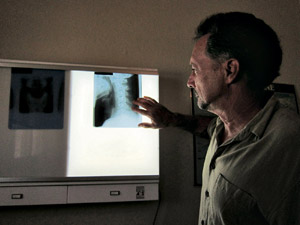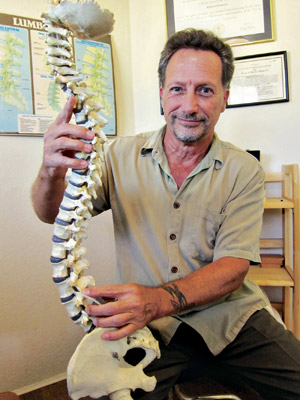Detecting Spinal Problems
Bob SwirynDoctor of Chiropractics
Please tell us about chiropractics. Chiropractors are focused on mechanical dysfunctions of the spine as it relates to the nervous system. The basic theory behind chiropractics is that if you have irritation or pressure on the delicate nerves coming out of your spine, then those nerves are not going to be able to work properly. Because those nerves are going to different parts of your body, controlling the chemistry of the body and how your body functions, they can actually affect the way your body works. If it stays that way long enough, you can start to create serious disease processes. The job of the chiropractor is to be able to detect these spinal problems, hopefully before they become chronic and symptomatic. We’re restoring normal motion to a joint that is not moving properly. I look for, feel or palpate for these restricted joints. When I find one, I adjust it by taking the joint, opening it up so the body’s ligaments and muscles return it to its normal motion.
How do nerve issues show up? Most of the time they start by not really showing up at all symptom-wise. Only 10 percent of the function of a nerve is there for pain, the rest of the job of the nerve is to send messages back and forth to the brain to control what’s happening in the body. So we may not know that we have these nerve problems because we may not be aware of symptoms at the time. Things can start going wrong, and the body has a good way of adapting to those things. People do, however, come in with back pain, neck pain, headaches, pain shooting down the leg, numbness in their hands – issues very clearly linked to the nerves. A lot of these things accumulate over a lifetime because of injuries from the past – auto accidents, sports fall, sitting at the job. These affect how the spine is moving and cause vertebrae to misalign and, over time, interfere with these nerves.
What is the popping sound that happens during adjustments? The popping sound is nothing more than a release of pressurized gas in between the joints. When you have a joint, you’re looking at two bones coming together surrounded by ligaments, and in the middle is a fluid. The fluid is under pressure to keep the bones from smashing into each other. And just like anything under pressure, if you open up that space quickly, you will hear the release of that gas inside the fluid. It’s the same as opening up a soda can – it’s pressurized in there and it’s a release.
Is it bad for you to pop your own joints like your knuckles? It’s probably not going to hurt you. At the worst, it will probably stretch some of the ligaments holding your joints together, and maybe over the years you might get some arthritic stuff going on. When adjusting, or popping, you’re cracking a knuckle, for example, that’s already moving normally, and that’s the big difference.

Swiryn is a doctor of chiropractics and has been practicing on the island for 12 years. Coco Zickos photos
Why did you decide to become a chiropractor? I was helped by chiropractors myself and had been a patient since I was a teenager – I had a lot of injuries growing up to the point where I saw an orthopedic surgeon in my 20s who wanted to do surgery on me and told me if I didn’t have it done, I’d be in a wheelchair by the time I was 40. Turns out, I’m 58 and my back feels better today than it did 20 years ago because of the regular adjustments I received. I decided to become a chiropractor because I thought that if these guys could help me and keep me out of surgery, I could do the same thing.
What advice do you give your patients? It’s not only the adjustments; you’ve got to take care of yourself. It’s exercising and keeping your back strong. It’s eating properly and getting the right nutrition.
What ages are your patients? I see everybody from infancy to their 90s.
What kind of injuries do babies have? The first trauma in life is often birth trauma. There are situations where a shoulder gets stuck or their head is not coming out, and so they start pulling. You can imagine a baby with no muscle tone at all and the bones are not even bones, they’re just cartilage, and you start pulling on a baby’s head, it can cause the vertebrae to get locked up.
How often does a patient need to come in for adjustments? It depends on their particular condition. Once a month, once a week or maybe even just a few sessions is all it will take.
What special do you currently offer for keiki? On Saturday mornings from 9 to 11, I will be taking care of anyone under 18 years old at no charge. There are no strings attached, there is no obligation, it’s just a free service.
822-0711 4-976 Kuhio Hwy. Kapa’a, HI 96746 swiryn@hotmail.com




